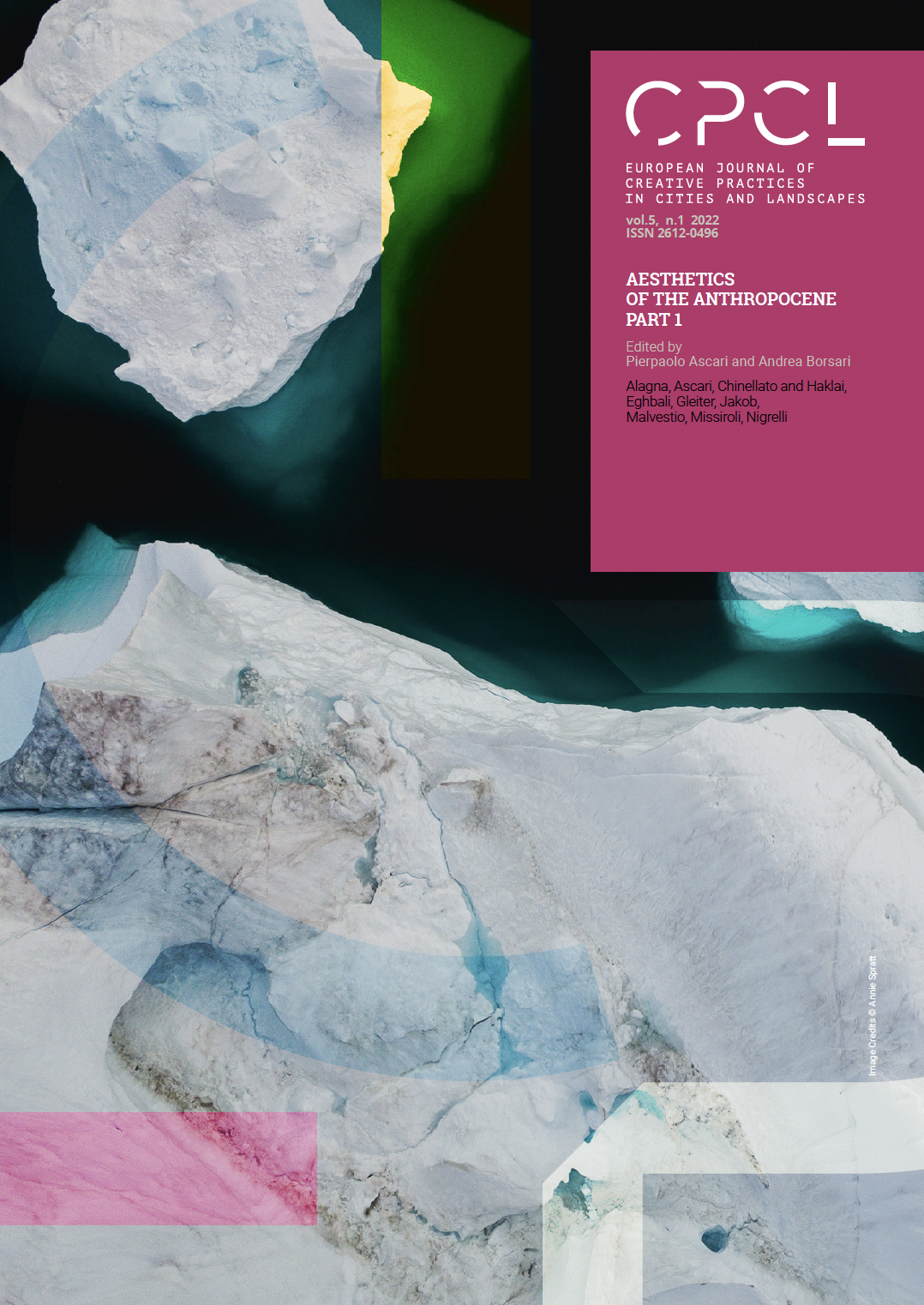Almost Black Green. On the Nineteenth-Century Park and the Naturalization of Inequalities
DOI:
https://doi.org/10.6092/issn.2612-0496/14749Keywords:
Perception, Pubblic Park, Anthropocene, Inequalities, Industrial cityAbstract
In the nineteenth century, the projects of what Lewis Mumford called their “positive side” developed together with industrial cities: the large public park. The article aims to show how the inspiration, construction and functioning of these great engineering works also reveal a “dark side”, understood as the use of the landscape and the spectacle of nature as a means of reproducing social inequalities.
References
Davis, Mike. Magical Urbanism. Latinos Reinvent the Us City. London: New York: Verso, 2000.
Di Campli, Antonio. Abitare la differenza. Il turista e il migrante. Rome: Donzelli, 2019.
Foucault, Michel. Discipline and Punish. The Birth of the Prison. New York: Vintage Books, 1995.
Hamon, Françoise. “Les Buttes-Chaumont,” in Les Parcs et jardins dans l’urbanisme parisien XIX e - XX e siècle. Paris: Délégation à l’Action Artistique de la Ville de Paris, 2001.
Hebbert, Michael. “Re-Enclosure of the Urban Picturesque: Green-Space Transformations in Postmodern Urbanism”. The Town Planning Review 79, no. 1 (2008): 31-59.
Hodkinson, Stuart. “The new urban enclosures”. City: analysis of urban trends, culture, theory, policy, action 16, no. 16 (2012): 500-518.
Jacobs, Jane. The Death and Life of Great American Cities. New York: Vintage Books, 1961.
Kruse, Kevin M. “The Politics of Race and Public Space. Desegregation, Privatization, and the Tax Revolt in Atlanta”. Journal of Urban History 31, no. 5 (2005): 610-633.
Lee, Shin, and Webster, Chris. “Enclosure of the urban commons”. GeoJournal 66, no. 1/2 (2006): 27-42.
Madden, David J. “Revisiting the End of Public Space: Assembling the Public in an Urban Park”. City & Community 9, no. 2 (2010): 187-207.
Mels, Tom. “Primitive Accumulation and the Production of Abstract Space: Nineteenth-century Mire Reclamation on Gotland”. Antipode 46, no. 4 (2014): 1113-1133.
Molotch, Harvey. “The City as a Growth Machine: Toward a Political Economy of Place”. American Journal of Sociology 82, no. 2 (1976): 309-332.
Mumford, Lewis. The Culture of Cities. San Diego, New York, London: HBJ Book, 1970.
Olmsted, Frederick Law. Writings on Landscape, Culture, and Society. New York: Library of America, 2015.
Pellegrino, Gianfranco, and di Paola, Marcello. Nell’Antropocene. Etica e politica alla fine del mondo. Roma: DeriveApprodi, 2018.
Picon, Antoine. “Nature et ingégnerie: le parc des Buttes-Chaumont”. Romantisme 150, no. 4 (2010): 35-49.
Pratt, Mary Louise. “Arts of the Contact Zone”. Profession (1991): 33-44.
Santini, Chiara. “Construire le paysage de Paris. Alphand et ses équipes (1855-1891),” in Le Grand Paris d’Alphand.
Création et transmission d’un paysage urbain, actes du colloque international organisé par l’ENSA La Villette et l’ENSP Versailles à la Mairie de Paris du 27 au 29 November 2017. Paris: Éditions de la Villette, 2018.
Sarpi, Paolo. Istoria del Concilio Tridentino. Turino: Einaudi, 2011.
Sevilla-Buitrago, Alvaro. “Central Park against the streets: the enclosure of public space cultures in mid-nineteenth century New York”. Social & Cultural Geography 15, no. 2 (2014): 151-171.
Sevilla-Buitrago, Alvaro. “Capitalist Formations of Enclosure: Space and the Extinction of the Commons”. Antipode 47, no. 4 (2015): 999-1020.
Sorkin, Michael. Variations on a theme park: the new American city and the end of public space. New York: Hill and Wang, 1992.
Venturi, Robert, Scott Brown, Denise, and Izenour, Steven. Learning from Las Vegas: The forgotten Symbolism of Architectural Form. Cambridge, Massachusetts, and London, England: The MIT Press, 1972
Williams, Brett. “The Paradox of Parks”. Identities: Global Studies in Culture and Power 13 (2006): 139-171.
Downloads
Published
How to Cite
Issue
Section
License
Copyright (c) 2022 Pierpaolo Ascari

This work is licensed under a Creative Commons Attribution 4.0 International License.




